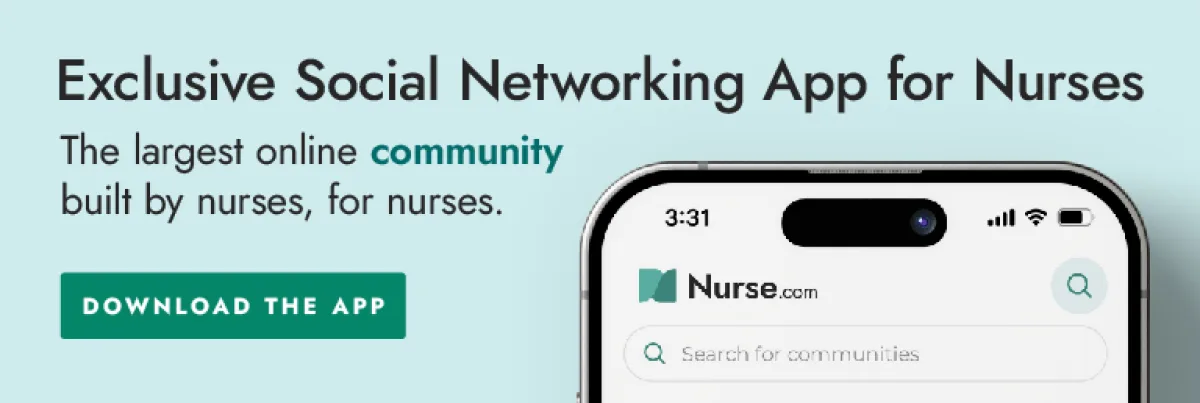Nurses are leaving direct care, and dissatisfaction with outdated staffing models may be a big reason why.
How can you provide safe, efficient patient care and meet the evolving needs of nurses? Innovative nurse staffing models can be the answer. Making a commitment to find and implement new staffing models is a great way to show nurses that you support their well-being and hard work.
"Organizations are being very creative with all sorts of out-of-the-box solutions," said Carol Boston-Fleischhauer, Managing Director and Chief Nursing Officer for Research at The Advisory Board Company.
Plenty of motivation for change
Data demonstrates an urgent need to revamp existing staffing models. About one-third of nurses plan to leave their current positions, according to McKinsey & Company's latest research. And in a report from the American Association of Critical-Care Nurses (AACN) of over 9,000 nurses surveyed, only 24% said they have appropriate staffing more than 75% of the time. The majority of nurse leaders (92%) expect the nurse labor shortage to get worse, according to another report.
"We know that for the next decade — literally decade — it's going to be challenging to have enough nurses for the increasing number of people that are going to need care," said Claire Zangerle, DNP, MBA, RN, NEA-FC, FAONL, FAAN, Chief Nurse Executive at Allegheny Health Network (AHN).
It may be helpful for nurse leaders to consider the nursing shortage as an opportunity to abandon outdated staffing models. "The current environment in health care is providing a unique impetus to explore innovative approaches," said Cynde Gamache, DBA, RN, NEA-BC, Vice President and Chief Nursing Officer at Southeast Georgia Health System.
Innovative nurse staffing models
Why are nurses leaving? They may want a different role or care setting, a more flexible schedule, or a break from direct care. "If we did just one thing, we would not be successful," Zangerle said.
Nurses are taking on new roles like these at Ann & Robert H. Lurie Children's Hospital of Chicago:
- Educational authorities (to support newer nurses on the night shift)
- Clinical excellence mentors on cardiac care units
- Shared inpatient and outpatient roles within a specialty (e.g., hematology/oncology, where nurses work on both inpatient units and ambulatory infusion centers)
- Support personnel to step into roles as needed (e.g., admission and discharge nurses)
- Asthma specialists (to educate patients prior to discharge)
"We have allowed each unit to identify what works for their team and patient population," said Karen Richey, DNP, MBA, RN, NEA-BC, Associate Chief Nursing Officer for Inpatient Services at Ann & Robert H. Lurie Children's Hospital of Chicago.
Varied staffing solutions
Nursing leaders are breaking out of the one-size-fits-all staffing mindset. Nurses are thriving with these novel staffing models.
Utilizing LPNs in acute care
Many licensed practical nurses/licensed vocational nurses (LPN/LVNs) seek jobs in post-acute care (nursing homes, skilled nursing facilities, assisted living) or ambulatory facilities. "We are partnering with local vocational schools to invite LPNs from those programs to work in acute care," Zangerle said.
The LPN/LVN scope of practice differs by state and must be considered in this model. The relief in workload that the LPN/LVN can provide, at a minimum, includes patient care tasks, such as dressing changes and admission and discharge documentation. "This frees the RN up to continually assess the patient, communicate with the care team, and other critical skills that allow the RN to practice at top of license," Zangerle explained.
Team-based care
The COVID-19 pandemic spotlighted the importance of cross-training nurses to work outside of their specialties to cover care needs. "Each member of the care teams needs to be fully engaged to optimize patient care and outcomes," said Stacey Chappell, Director of Advocacy and External Communications at the American Organization for Nursing Leadership (AONL).
About 40% of AHN's inpatient units have converted to a team-based model wherein a team of nurses takes care of a cohort of patients. Nurses are able to cover for each other, allowing for meal or bathroom breaks. "We are seeing remarkable results relative to patient safety, experience, quality -- and also, notably, employee engagement and wellness," Zangerle said.
Flexible schedules
"We have kind of gotten out of our own way in nursing and dropped some of our rigidity in scheduling," Zangerle said. Instead of offering strictly 12-hour shifts, nurses can work four-hour blocks, eight-hour shifts, only weekends, or only nights. Another incentive: Nurses get extra pay for working off-shifts.
"Hybrid" positions
The intent is to extend the careers of direct care nurses who want less stress. Nurses can work part time in direct care and part time in another role (such as research nurse or care manager). "It gives them the best of both worlds. That's been really popular with our nurses," Zangerle said.
Internal staffing pools
Southeast Georgia Health System created a Nursing Resource Pool in summer 2022. And so far, 47 nurses have been hired into the program. "Flexibility is an expectation in this role," Gamache said. Nurses agree to work full time in the pool for 26 weeks and are assigned to whichever hospital they're needed. "Staffing is consistent, and nurses get a higher rate of pay," she added.
Hire nursing students as student nursing assistants
To support their nursing staff, some organizations have integrated nursing students into their workforce. "This prepares them to start work as a new graduate nurse in the nurse residency program," Richey said.
In-house staffing agencies
"For larger systems, this is a growing trend," said Boston-Fleischhauer. Nurses get logistical support for travel and housing. Compensation is based on the degree of flexibility that the nurse is willing to accept. In-house agency staff are viewed as permanent employees, supportive of the system's mission, vision, and culture. "This is in direct contrast to RNs from outside agencies assuming temporary employment at a specific institution," Boston-Fleischhauer said.
Virtual nursing
Over 40% of nurses delivered care virtually in 2021. AHN's inpatient nurses collaborate with a virtual nurse through an iPad to discharge patients. "The same process is used to free up staff nurses from some admission tasks," Zangerle said.
Remote support can offload care that does not require a physical presence. "This frees the direct care nurse to focus on physical assessment, medication administration, and mobility," said Sarah A. Delgado, MSN, RN, ACNP, Clinical Practice Specialist at the AACN.
Maximize your success
Changing existing staffing models is hard. Sometimes, it's viewed as disruptive to professional, organizational, and cultural norms. "Front-line staff involvement in model design is critical — along with investments in staff training, change management, and coaching," Boston-Fleischhauer said.
Whichever novel nurse staffing models you try, it's important that nurses are involved in the process. "Provide paid time for direct care nurses to take part in or lead every step of development and implementation," Delgado advised.
Connect with your fellow nurses about this important topic and more by downloading the Nurse.com app.







